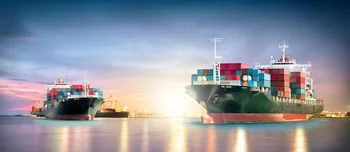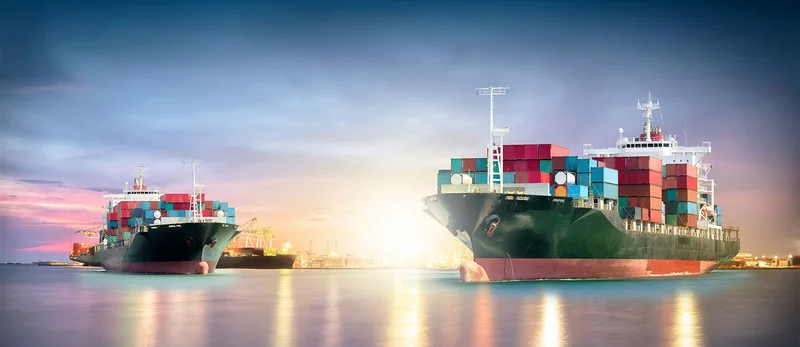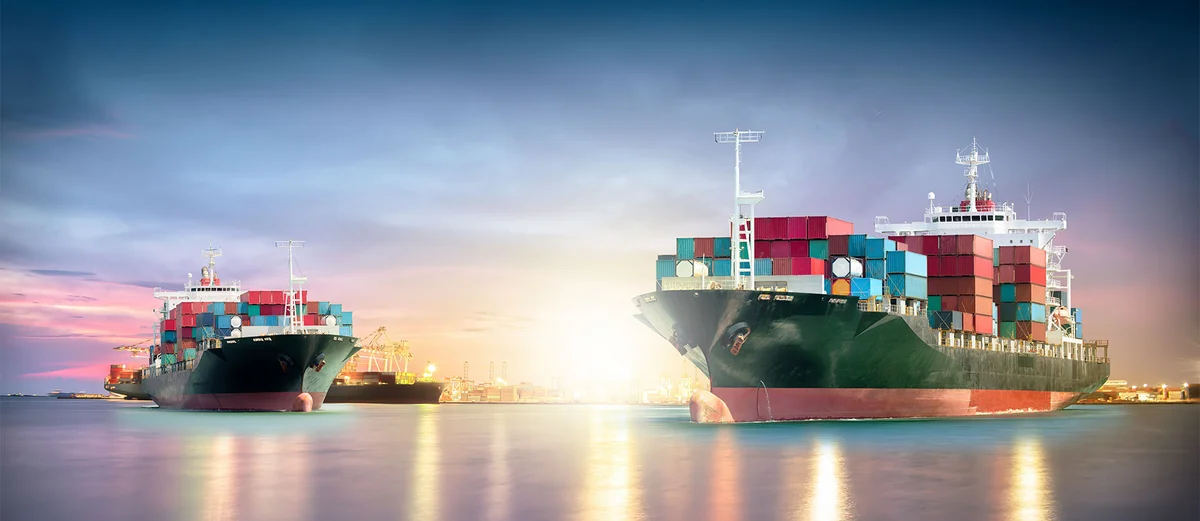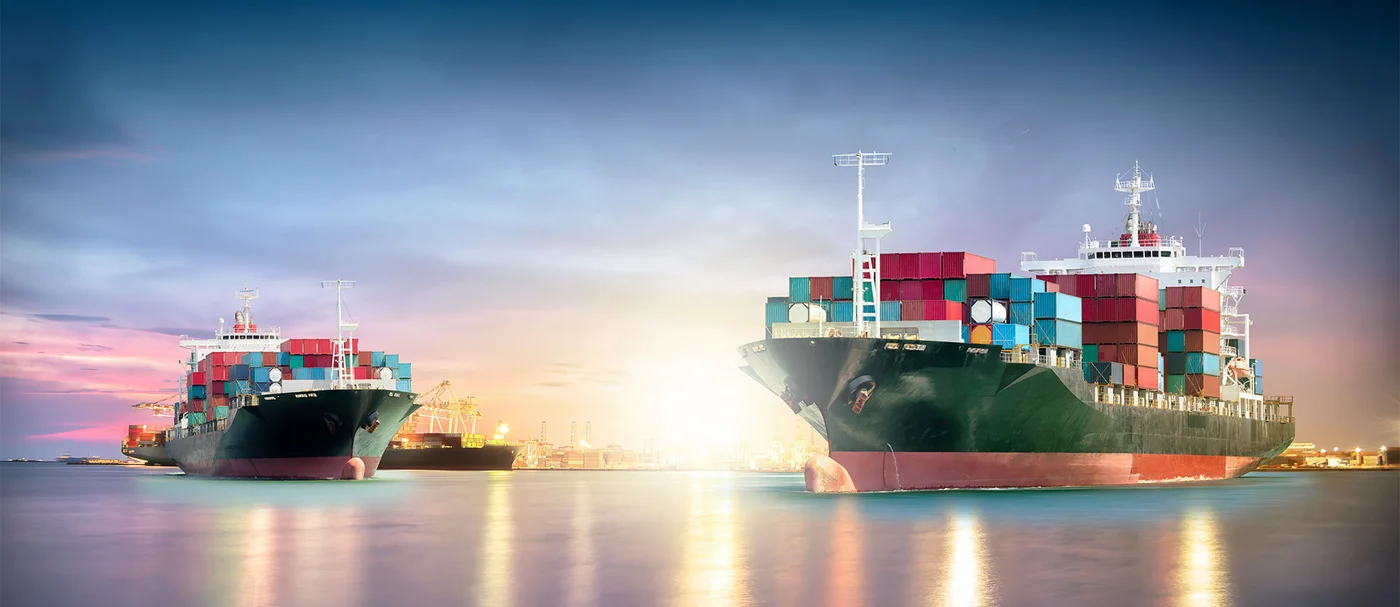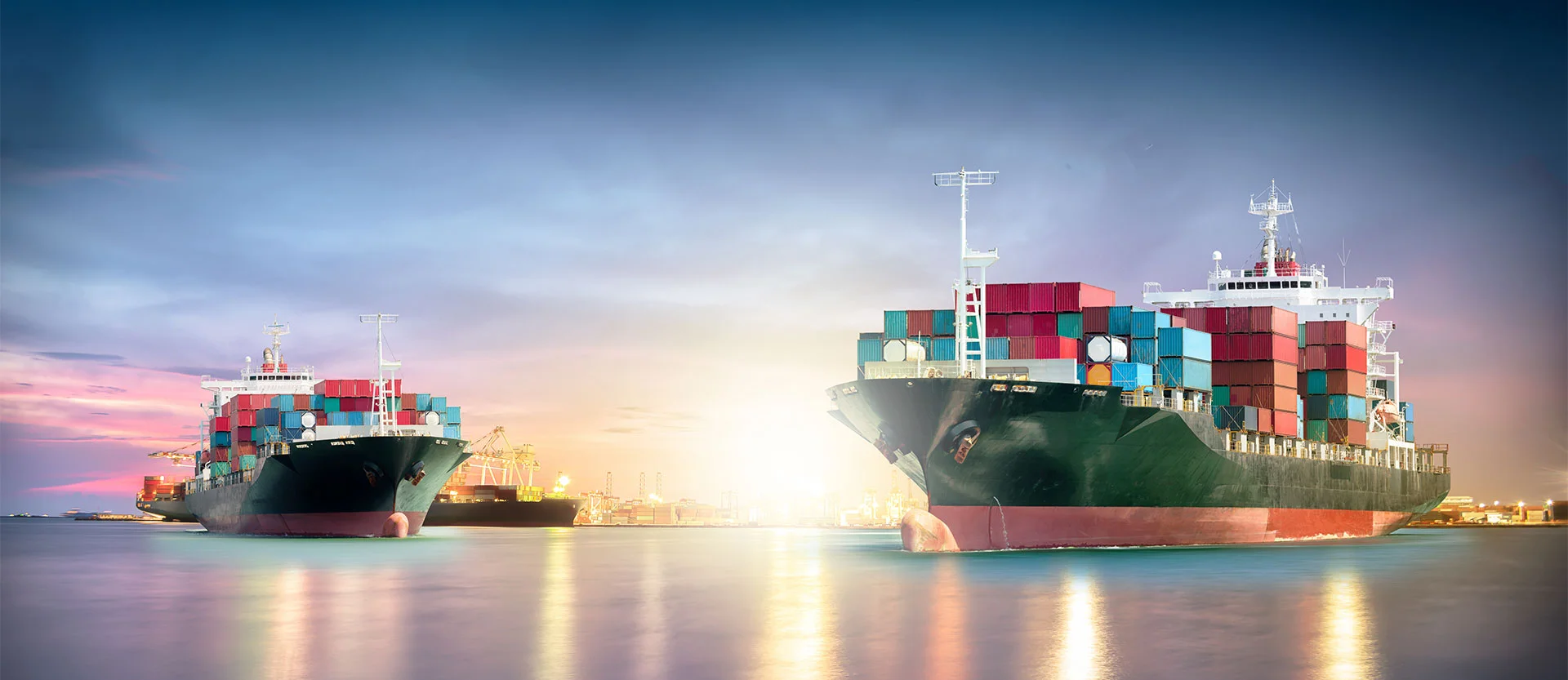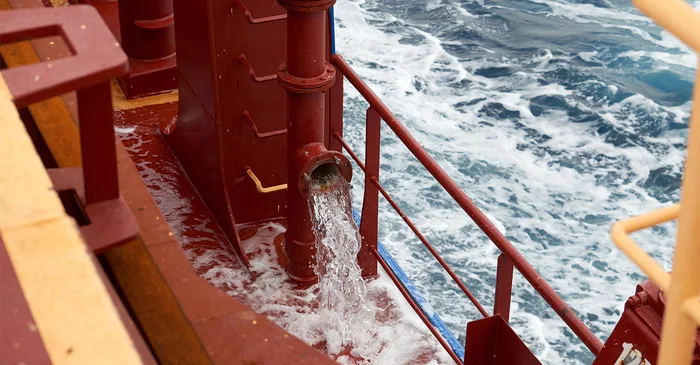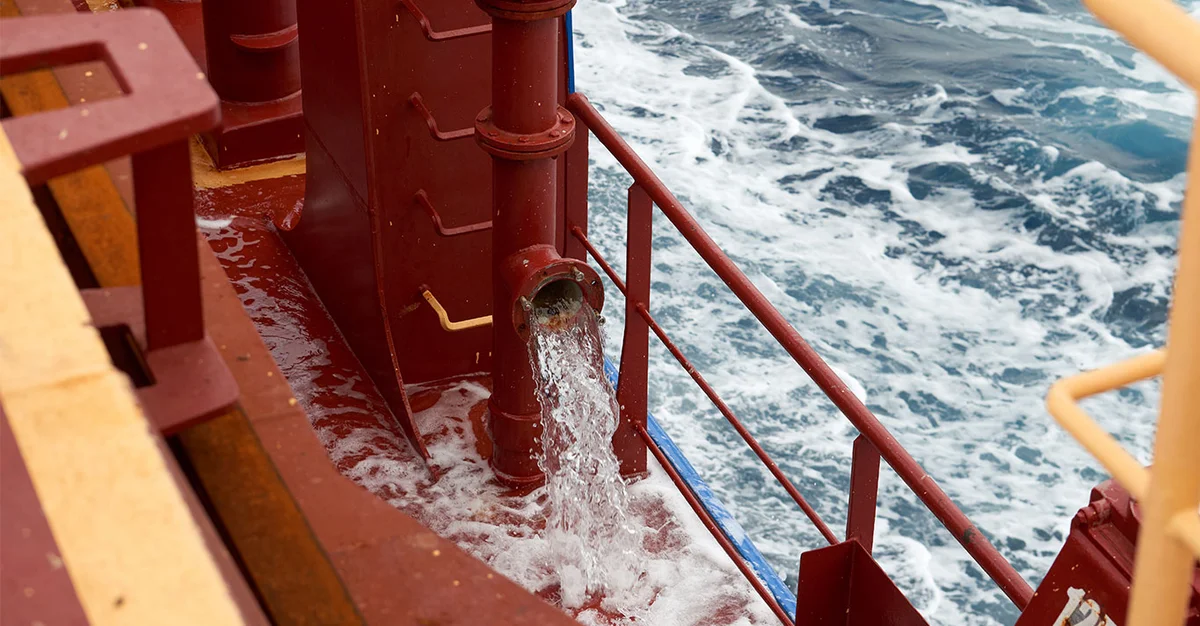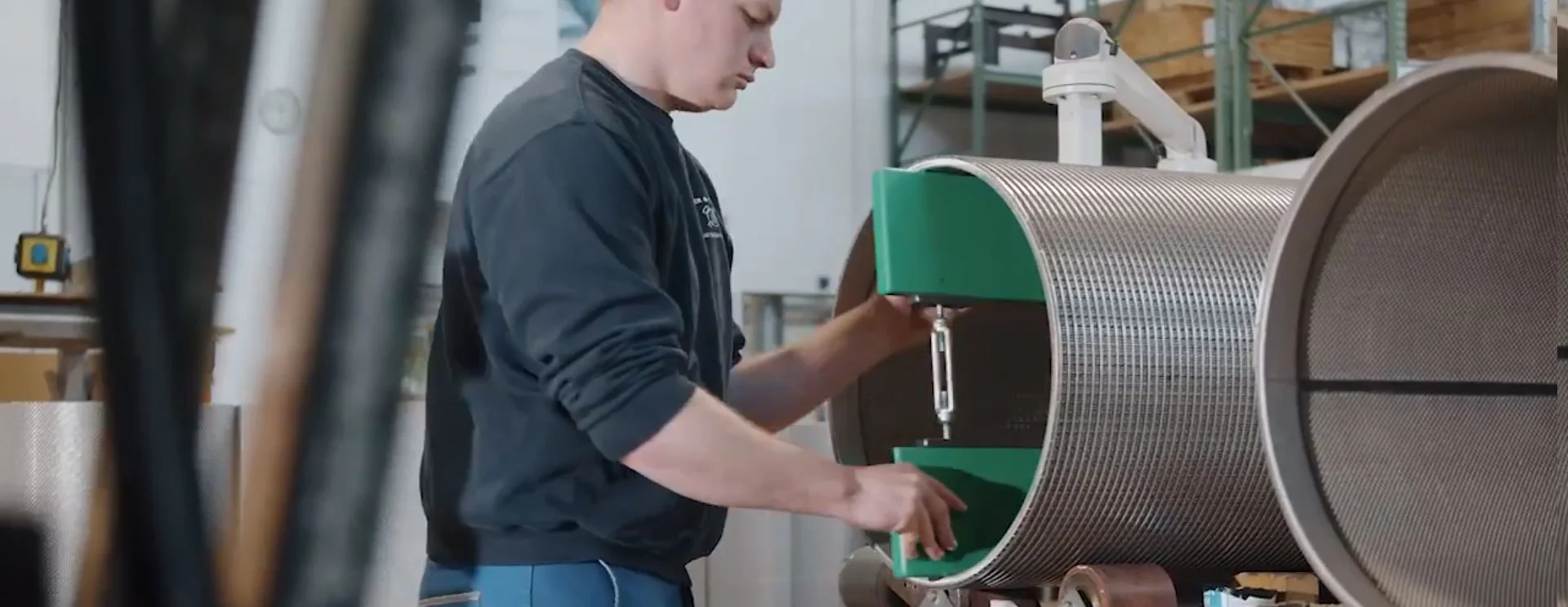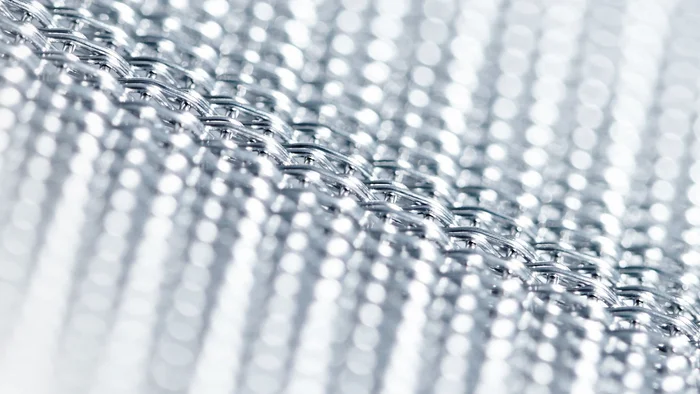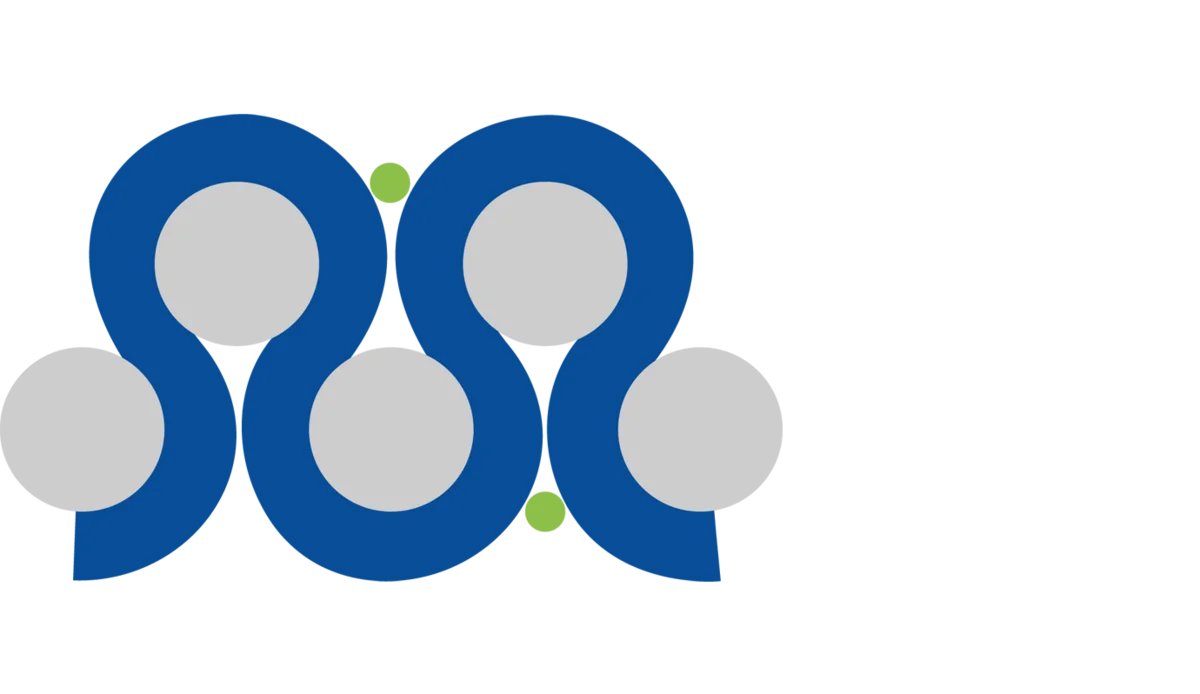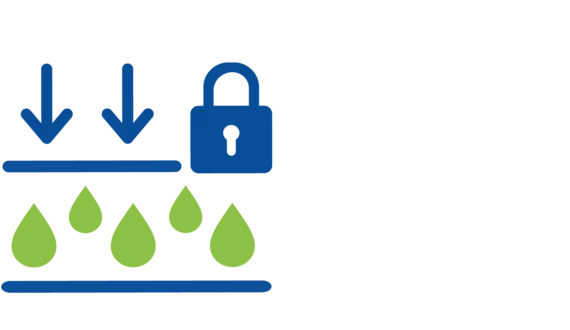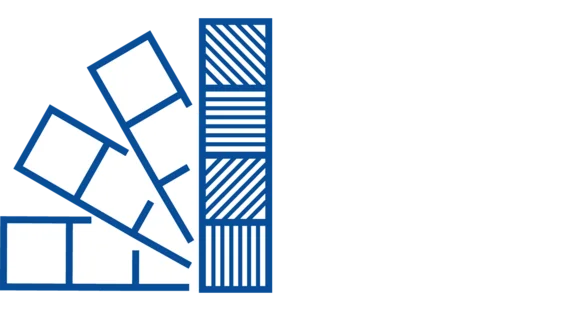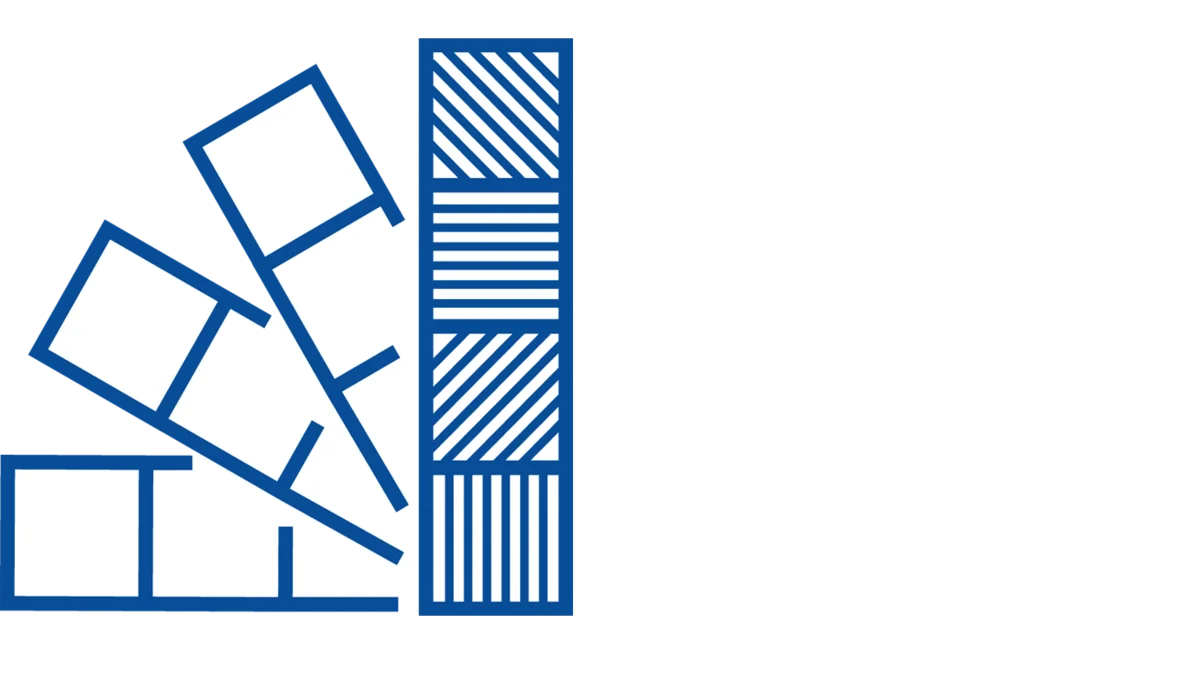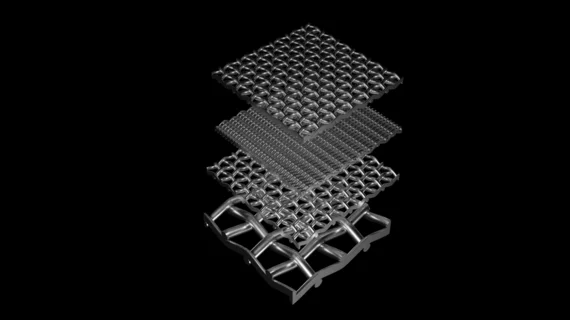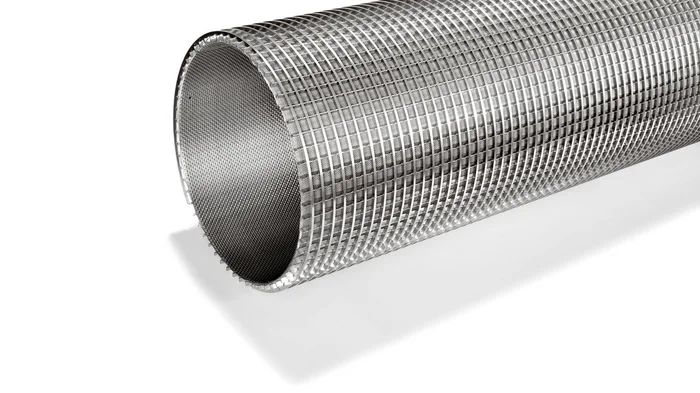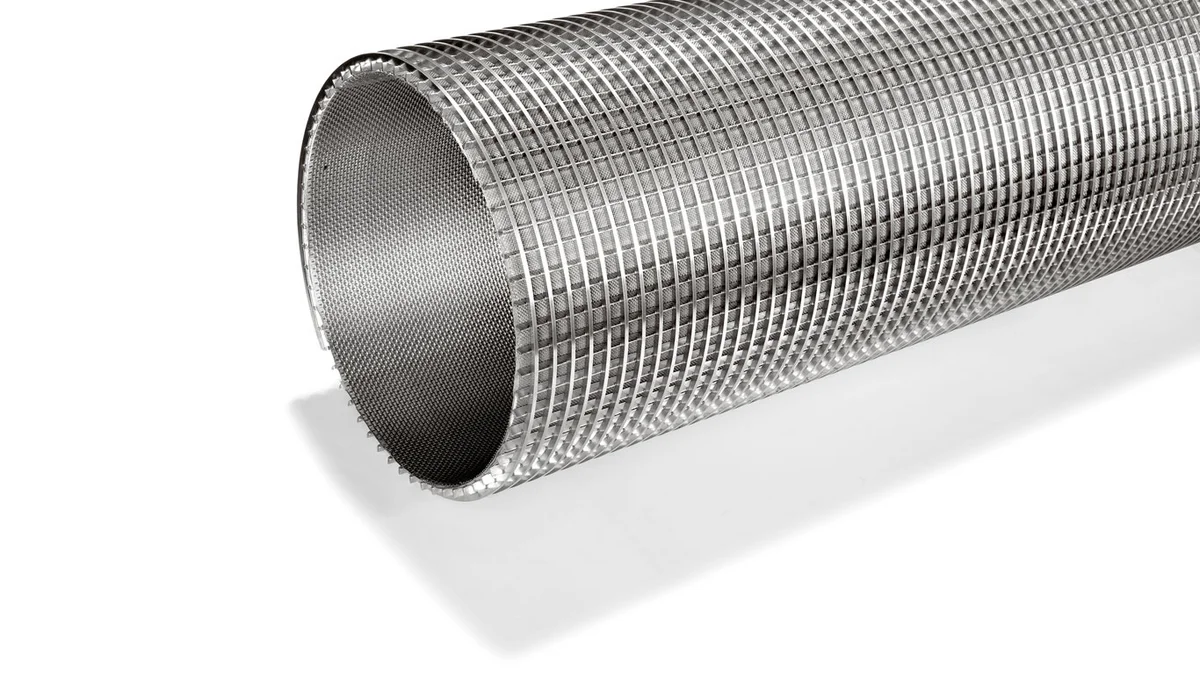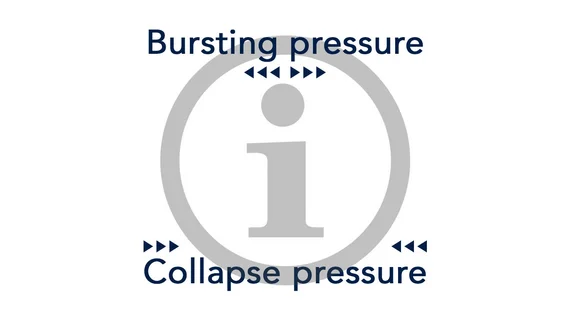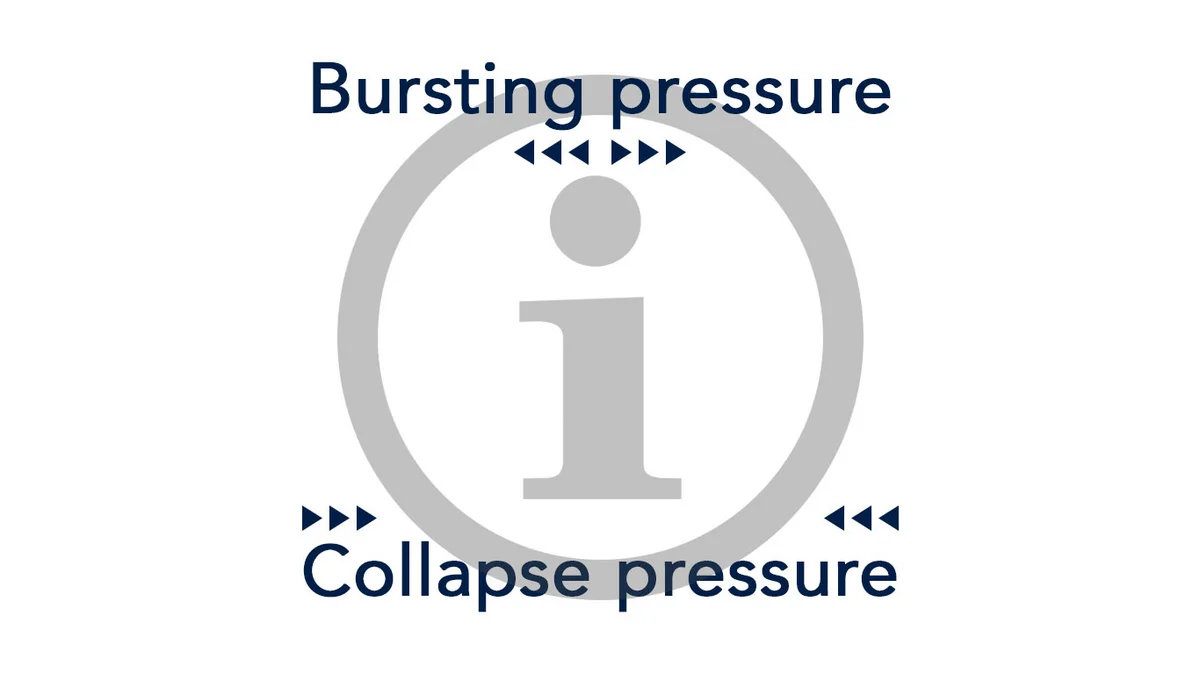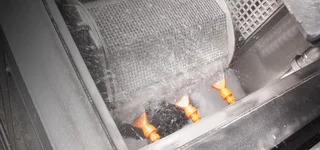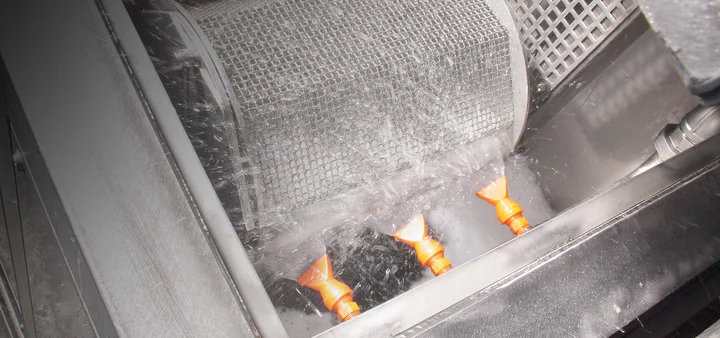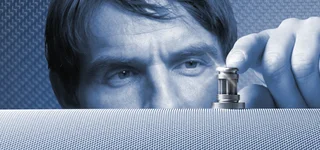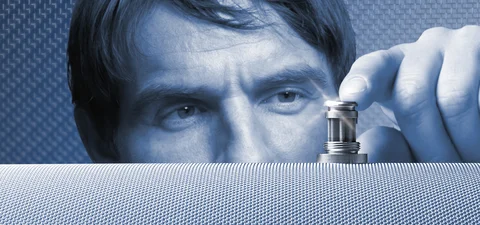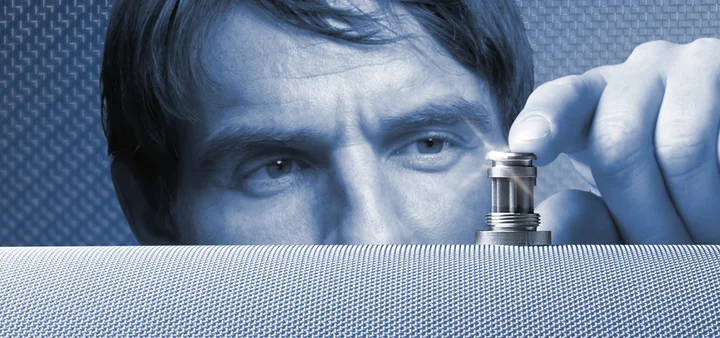Ballast water treatment in the container shipping sector
Optimum pre-filtration through metal mesh filter
On 31st May 1968, the “American Lancer“ carried the first container from America to Germany.[1] Over half a century later, the container shipping sector has become an essential part of global trade.
We have all become familiar with the positive effects of globalisation, and we procure food items, electronic goods, fuel, and much more from all over the world. That said, 90 % of EU overseas trade takes place by sea.[2]
However, this presents certain ecological risks due to the heavily used trade routes. One of these is the introduction of non-native species carried by the ships – via the ballast water, which ships use for stabilisation.
For this reason, standards have been defined in a ballast water agreement, where research teams developed a filtration system in which the finest living organisms and pilot microbes are filtered out. It is usual for chemical, physical, and mechanical cleaning processes to be deployed.
We will discuss later the success factors involved in optimal design of a ballast water filter. Still, in summary, the more precise this filter separates the desired particles, the fewer chemical and physical processes are required.
1. Background and risks from ballast water
Changes in weight that occur during loading and unloading must be balanced out in order to maintain the stability of a container ship. A partially empty ship sails with ballast water in it - thus its tanks are filled with seawater to balance it out.
However, living organisms are also present in the water. Whilst loading the ship in port, this water is drained along with the organisms.
Schematic representation of ballast water management
Source: https://www.bsh.de/DE/THEMEN/Schifffahrt/Umwelt_und_Schifffahrt/Ballastwasser/ballastwasser_node.html
The North Sea is one of the most frequented and densely used seas in the world.[3] There are already more than 200 species that have been introduced due to shipping ballast water.[4]
These include mussels, algae, small fish as well as microorganisms such as bacteria and viruses. If these non-native organisms establish themselves, they can drive out the native species.
This becomes quite problematic, not only ecologically but also economically, and can cause potential health problems.[5] For example, zebra mussels were discovered in the Baltic Sea but originally came from the Black Sea.
The larvae are dangerous to cooling water systems and pipework installed in power stations.[6]
2. Ballast water treatment for a high standard
To avoid an uncontrolled exchange of water and to minimise the risks arising from the presence of foreign organisms, the International Shipping Organisation (IMO) developed a ballast water agreement in 2004, which came into force on 8th September 2017.[7] It regulates the exchange and treatment of ballast water in two stages – the D-1 and the D-2 standard.
The D-1 standard is an interim solution introduced for all ships active from September 2017. Using water exchange to an approved ballast water treatment plan, an effective volume renewal of at least 95 % of the ballast water is achieved.
Approved methods such as the Lenzen filling method, the through-flow method, and the dilution method are used. In the Lenzen filling method, the ballast water is pumped out of the water tank and replaced by fresh ballast water.
The other two exchange options involve “through-flow“ methods. During the periodic survey for obtaining an International Oil Pollution Prevention (IOPP) certificate, it is decided whether if changing over to the D2 standard is necessary.[8]
The D-2 standard, which is applicable for all newly built ships, uses a ballast water treatment system (BWMS) on-board or via a direct connection to an external system. For example, one on another ship or one on land.
The D-2 standard defines the limit for the permissible concentration of particles and organisms in treated water. According to this, it must be verifiable that there are:
- Less than ten living organisms > 50 µm in size per cubic metre of water.
- Less than 10 living organisms 10 µm < x < 50 µm in size per millilitre of water.
- Low concentrations of pilot microbes which are harmless to the health of humans.[9]
3. Optimum design of a mechanical ballast water filter
Ballast water treatment systems are based either on chemical or physical processes. The chemical process involves the use of active substances, ozone, or chlorine for disinfection, while a physical process involves radiation with UV light.[11]
Whatever the process used, there is always mechanical cleaning undertaken prior to the treatment systems in the form of a filter. This filter prevents the presence of larger organisms and reduces sediments in the ballast water tank.
It is, therefore, clear that a filter is essential for a smooth and efficient treatment process.
The functional properties of a wire mesh filter offer clear advantages and present a reliable process, particularly in extreme environmental conditions. The mesh consists of a pre-defined combination of warp and weft wires, which produce various mesh geometries according to the selection of wires and the mesh pattern.
It is possible to precisely define exact geometric structures, their pore sizes, and, therefore, the material and through flow properties. This allows for consistent filter performance across the whole filter surface and is versatile to work with.
The sustainability element is prominent in the easy cleaning of the wire mesh fabric and in the recyclability of this medium. Via the selection of the weave and the material used, the mechanical, chemical, and physical properties can be adapted to the requirements of the respective application.
3.2 Success factors concerning “Wire mesh filters for ballast water treatment“
When planning and developing a mechanical ballast water filter for a generally automatic self-cleaning system, three success factors play a central role. These factors are based upon three fundamental topics which must all be included in the decision-making process to obtain an optimal solution approach: Flow rate, filter fineness, and selection of a suitable material.
The wire mesh filter medium offers the optimum answer to these challenges – and is also independent of the selected cleaning method for the final filter system, such as rotating brushes, a rotating suction device, or backflushing.
We can show you in detail how we achieve this.
The plant footprint as an indicator of the ideal mesh form
A high flow rate coupled with a precise filtration performance is enormously relevant for the plant manufacturer. Limiting factors here, according to plant size, are the form and desire for the smallest possible construction size and the stability of the filter element.
If the pressure in the system remains constant, the throughput volume is influenced significantly by the size of the filter element. The maximum mechanical load-bearing capacity of the wire mesh filter which reduces for an increased size of the filter elements, and a steady pressure should always be considered when designing the system.
Apart from the pressure, the specification of the filter is also a variable that influences the load-bearing capacity. There is, therefore, the widest range of configuration options available according to the mesh type, weave, and number of different layers of wire mesh in a system.
To avoid having to find the ideal specification using a trial and error method, there are some very reliable simulation programmes that deliver a suitable solution based upon known framework conditions, such as the installation size and pressure conditions.
Open quadratic or rectangular meshes achieve very high throughput capacity. This advantage is to be compared, on the other hand, with the stability of an open fabric.
Since the woven wire, in this case, is usually no thicker than the intended aperture width (e.g., 25 µm), the mesh for the finest separation cut will be respectively finer and more unstable. It is for this reason that the manufacturers of large filtration systems choose, as the central element (namely the filtration layer), an extremely fine separation cut plain dutch weave with high strength.
To obtain the required bursting pressure and collapse stability of the fabric, the filtration layer can additionally be sintered together with so-called protective and support layers. These should be optimally matched to each other for use in seawater.
If the individual layers are not sintered, then they must be chosen for the final geometric filter shape such that the layers fit tightly together and do not begin to vibrate and become destroyed during the filtration and cleaning processes.
Maintenance of the separation efficiency is decisive
In order to reach the D-2 standard, the mechanical cleaning filter needs to retain the majority of the living organisms in order for the chemical and physical processes to handle the pilot microbes. As a reminder of the quantities which must be verifiable:
- Less than 10 living organisms > 50 µm in size per cubic metre of water
- Less than 10 living organisms 10 µm < x < 50 µm in size per millilitre of water
In the case of a plain dutch weave, which is primarily used for the filtration plant, the warp and weft wires are placed as tightly as possible together (“zero mesh“). The mesh has a pore rather than a rectangular mesh. The filter fineness is measured in terms of the geometrical pore size and represents, depending on the weave and wire thickness, the relevant range for ballast water treatment of between 10 µm and 80 µm.
Compared to alternative filter materials, the plain dutch weave has the following advantages in addition to its high separation precision and precise filter characteristic:
- A flow optimised fabric structure
- A high flow rate
- Easy cleaning
- A low tendency for blocking
- Longer filter service lives
The main qualities required are corrosion resistance and suitability for welding
If the choice made is for a filter element made from wire mesh, the size and structure required should be determined, followed by the material to be used. Not all stainless steel alloys are suitable for ballast water filtration.
Materials of Class A4 (1.4401, 1.4404, 1.4571) contain the alloy element molybdenum. In comparison with V2A steels (1.4301 or 1.4541) this element demonstrates a higher corrosion resistance in the presence of chlorine-containing media. The V4A steels also reach their limits quickly in a sea water environment. Therefore the choice is very often made for high alloy austenitic steels (for example 1.4539 or 1.4547) or austenitic-ferritic Duplex types. Thanks to its excellent resistance to .pitting, these materials can withstand the challenges of even the most extreme conditions. Nickel-copper-basic alloys such as 2.4360 can also be an alternative – but one must take account their lower tensile strength.
The degree of corrosion resistance (PREN = Pitting Resistance Equivalent Number) is only one of a number of selection criteria. Also relevant are the welding properties of used materials. Often, this joining technique is used as the filters are desired as fabricated parts in their final shape. The material is subjected to temperatures > 450 °C during welding which can lead to inter-crystalline corrosion in the heat-affected zone (HAZ). Post-treatment of the HAZ is therefore essential in sea water applications.
| W No. | Trade Mark /ALLOY | PREN* | Suitability for welding |
| 1.4539 | 904L | 34 | Easy to weld |
| 1.4529 | ALLOY 926/ AL-6XN | 42 | Easy to weld |
| 1.4547 | AVESTA 254 SMO | 43 | Easy to weld |
| 2.4602 | Hastelloy C22 | 64 | Easy to weld |
| 1.4410 | SUPER DUPLEX | 43 | Special filler metals are necessary, only to be used by trained personnel |
| 1.4410 | DUPLEX | 34 | Special filler metals are necessary, only to be used by trained personnel |
| 1.4404 | AISI 316 | 24 | Easy to weld |
| 2.4360 | Alloy 400/Monel | not necessary | weldable |
Conclusion
It is particularly the versatility of wire mesh which makes this filter medium the basis for an ideal solution for mechanical ballast water filtration systems. This versatility requires an overview of all options and their individual requirements.
With decades of experience in the manufacture and further processing of wire mesh, the engineers at Haver & Boecker know what the manufacture of components for ballast water treatment is all about. Apart from the highest precision and diligence, there is above all an extraordinary innovative spirit in dealing in with areas of wire mesh production.
Do not delay in approaching us with your project ideas and challenges.
Sources:
[1] cf. Dummer, Niklas: “Wie Containerschiffe die Globalisierung prägten“, WirtschaftsWoche, October 2022
[2] cf. Umweltbundesamt: „Wasserwirtschaft in Deutschland“, October 2017, page 94
[3] cf. ibid.
[4] cf. ibid., page 96
[5] cf. Umweltbundesamt: Ballastwasserbehandlung | Umweltbundesamt, February 2021
[6] cf. Grotelüschen, Frank: „Immer Ärger mit dem Ballastwasser“, Deutschlandfunk, September 2012
[7] cf. Umweltbundesamt: Ballastwasserbehandlung | Umweltbundesamt, February 2021
[8] cf. BSH Hamburg: „Ballastwasser-Übereinkommen“, Deutsche Flagge , page 6 ff.
[9] cf. ibid., page 15 ff.
[10] cf. ibid., page 18
[11] cf. Umweltbundesamt: Ballastwasserbehandlung | Umweltbundesamt, February 2021
